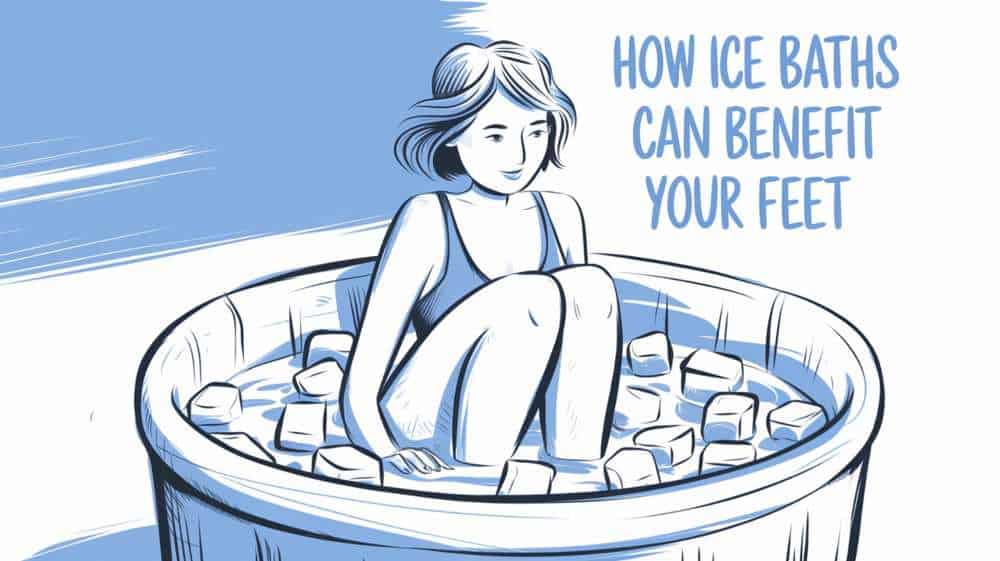Have you ever finished a long day on your feet and wished for a quick way to ease the ache? Or maybe you’re an athlete looking for a better way to recover after intense training?
Doing an ice bath for your feet can be done by hopping in the ice bath or just soaking your feet in one. While ice baths can be intimidating at first, many people find that the benefits are well worth the chill. Specifically for feet, it can help with swelling, soreness, as well as help manage some foot conditions.
In this article, we’ll explore why ice baths can be great for your feet and how to do them safely.
8 Benefits of Ice Baths for Your Feet
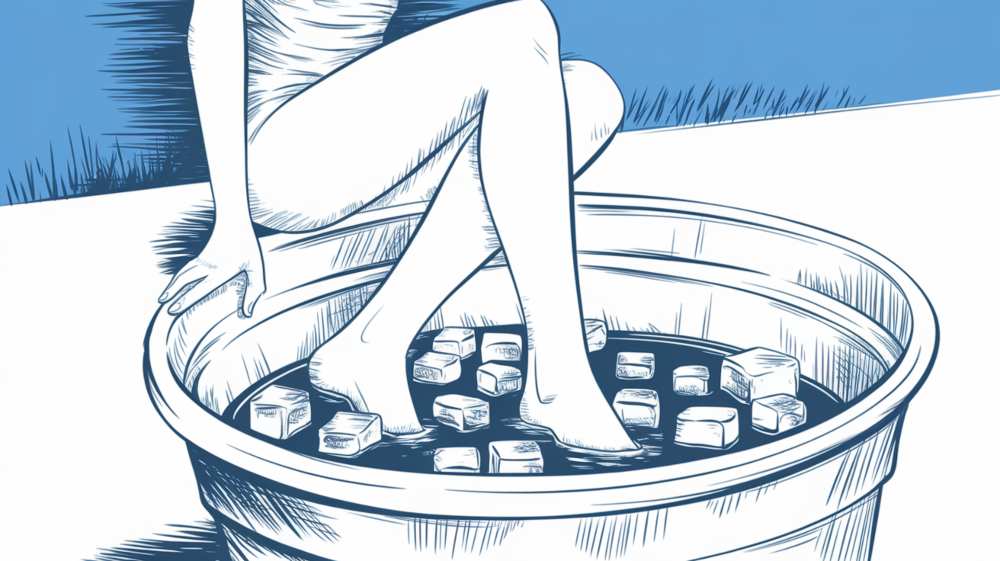
1. Reduces Inflammation and Swelling
One of the main reasons people use ice baths is to reduce swelling. When you soak your feet in cold water, it causes the blood vessels to narrow. This helps decrease the amount of blood flow to your feet, which can reduce swelling and inflammation. It’s especially helpful if your feet tend to swell after standing or walking for long periods.
2. Alleviates Muscle Soreness
If you exercise regularly or spend a lot of time on your feet, you’re probably familiar with sore muscles. Ice baths can help with this too. The cold water helps slow down nerve impulses, which can reduce the feeling of pain in your muscles. Research has proven that it can also help prevent delayed onset muscle soreness (DOMS), which is the achiness you might feel a day or two after a tough workout.
3. Provides Pain Relief
Ice baths don’t just help with muscle soreness – they can provide relief for other types of foot pain too. The cold water acts like a mild anesthetic, numbing your feet and providing temporary relief from pain. This can be particularly helpful for conditions like plantar fasciitis, which causes pain in the bottom of your foot.
4. Improves Circulation
While it might seem counterintuitive, ice baths can actually improve blood flow to your feet in the long run. When you first put your feet in cold water, your blood vessels narrow. But once you take them out and they start to warm up, your blood vessels open wide, increasing blood flow. This improved circulation can help keep your feet healthy and may even speed up healing of minor injuries.
5. Speeds Up Recovery
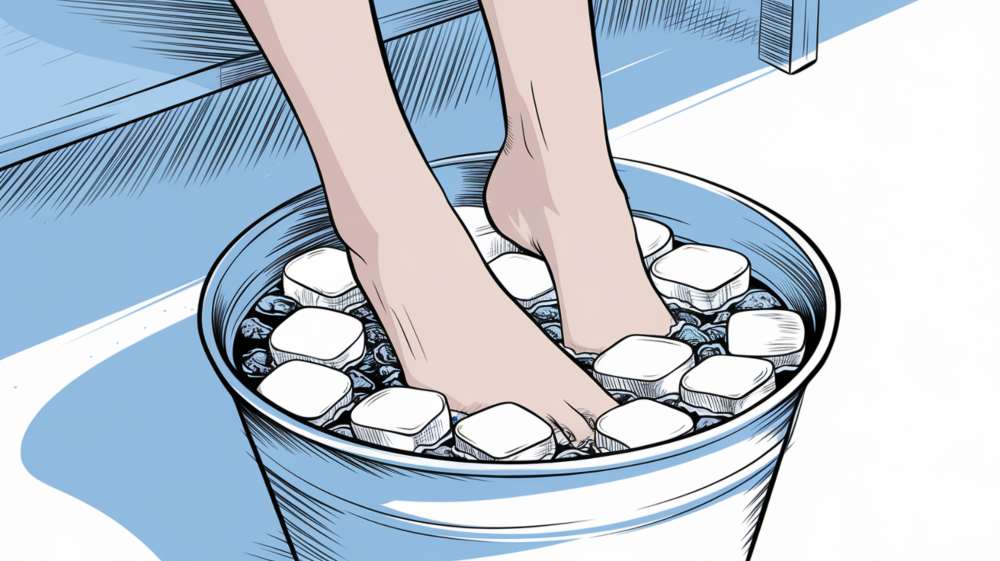
Everyone has heard of icing foot injuries to reduce swelling to speed up recovery. Ice baths can help speed up this process. The cold water helps flush out waste products that build up in your muscles during exercise. It also helps reduce excess inflammation, which can slow down the healing process. By using ice baths regularly, you might find that your feet recover more quickly from strenuous activity.
6. Helps Manage Plantar Fasciitis
Plantar fasciitis is a common foot problem that causes pain in the bottom of your foot, especially near the heel. It happens when the plantar fascia, a band of tissue that runs along the bottom of your foot, becomes inflamed. When you soak your feet in cold water, it helps reduce the inflammation in the plantar fascia. This can lead to less pain, especially in the morning when plantar fasciitis pain is often at its worst.
7. Provides Relief for Achilles Tendinitis
Achilles tendinitis is a condition that causes pain in the back of your ankle, where the Achilles tendon connects your calf muscles to your heel bone. It’s common among runners and other athletes, but can affect anyone who puts a lot of stress on their feet. Ice baths can be a great tool for managing Achilles tendinitis. The cold water helps reduce swelling in the tendon and numbs the area, providing pain relief.
8. Eases Gout Symptoms
Gout is a type of arthritis that often affects the big toe. It happens when uric acid builds up in your body and forms crystals in your joints, causing sudden, severe attacks of pain, swelling, and redness. The cold from an ice bath can help numb the pain in your toe, providing some relief during a gout attack. It also helps reduce inflammation, which can make your toe less swollen and red.
There was a solid study on cold water treatment for gout in a recent study. The nice thing about this is they had participants soak thier feet in water only as cold as 68°F (20°C), but for 20 minutes a day. After four weeks of this treatment on 76 participants with gout, there was significant: pain alleviation, stress relief, improved mobility, and general feel of improved quality of life
How Long to Ice Bath for Feet Benefits
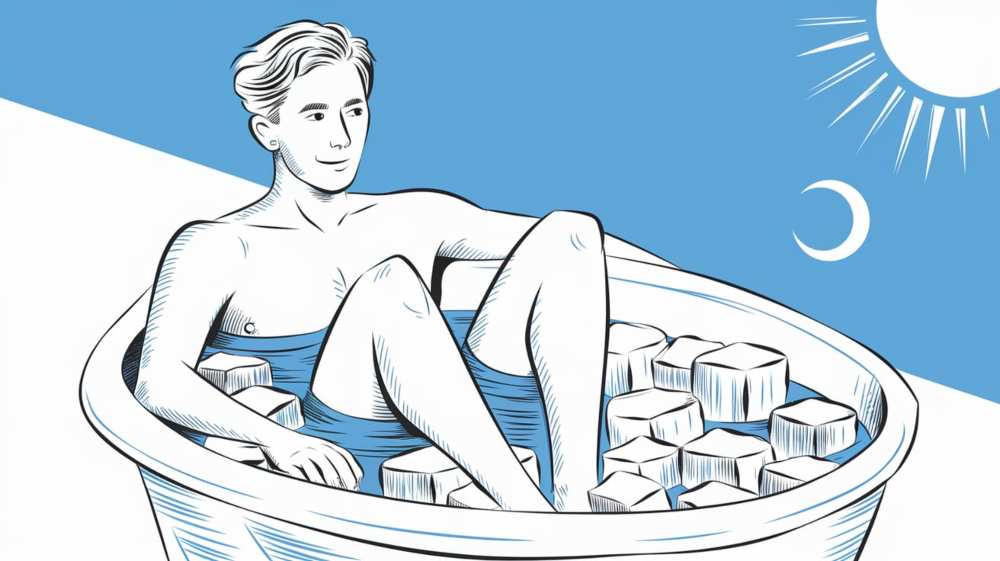
The duration of your ice bath can greatly affect the benefits you receive. Here’s what you need to know:
For general recovery and maintenance, a 3-5 minute soak in cold water (around 50-59°F or 10-15°C) can produce many of the benefits we’ve discussed, like reducing inflammation and alleviating muscle soreness. However, for swelling, or you’re dealing with a particular foot issue, you might benefit from longer soaks at a slightly higher temperature. For example conditions like plantar fasciitis or Achilles tendinitis, doctors suggest soaking for 15-20 minutes in water that’s a bit warmer.
What Time of Day is Best For your Feet to Ice Bathe?
Generally people consider doing ice baths in the morning or after a workout as the best times to ice bath. This is for the mental boost or added support for workout recovery. However, there may be better times for when to soak your feet in ice.
Some research suggests that doing your ice bath before bed can be more effective for certain foot conditions. This study found that applying cold therapy at night led to significant improvements in pain and function for people with plantar fasciitis. However, you could both take an ice bath in the morning, and then soak your feet in ice before bed.
Risks of Taking Ice Baths for Your Feet
While ice baths can definitely help your feet, there are some potential risks to tak into consideration:
- People with poor circulation should be cautious when using ice baths. The initial reduction of blood flow, which might cause problems.
- If you have nerve damage in your feet, you might not be able to feel how cold the water is. This could lead to staying in the ice bath too long and potentially harming your skin.
- Some medical conditions, like Raynaud’s syndrome, can make ice baths unsafe.
If you’re concerned about these risks but still want to try cold therapy, consider using waterproof ice bath socks. These provide an extra layer of protection from the cold while still allowing you to enjoy some of the benefits.
If you do have foot issues, or your feet hurt during or after an ice bath, be sure check with your doctor to get advice on how you may proceed.
Beyond Foot Soaks: Trying Full-Body Ice Baths
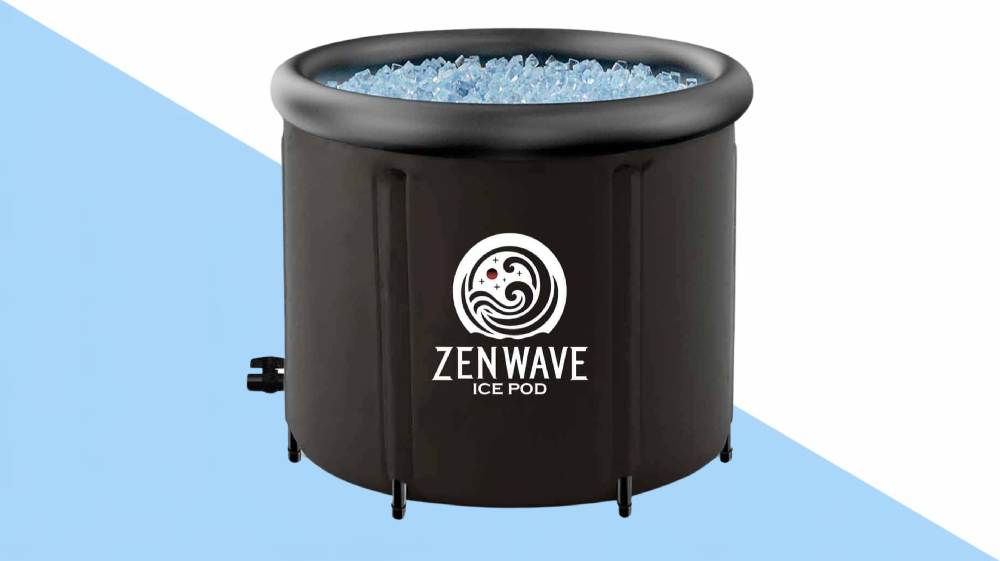
Helping your feet is just one of the many benefits of ice baths. While soaking your feet is a great way to start, some people choose to take the plunge with full-body ice baths.
If you’re ready to try a full-body ice bath, one of the most budget-friendly options is the Zenwave Ice Pod. While it’s more affordable than many alternatives, it’s far from being a cheap product.
The Zenwave Ice Pod is designed for durability and comfort. It has a large 116-gallon capacity, giving you plenty of room for a full-body soak. What sets it apart is its five-layer construction:
- The outer layer is made of durable, water-resistant nylon.
- Two PVC layers provide extra waterproofing and strength.
- A padding layer offers insulation to keep the water cold.
- The inner layer is smooth and easy to clean.
This construction, along with accessories like a protective cover, makes the Zenwave Ice Pod a high-quality option for at-home cold therapy.
Whether you start with foot soaks or dive into full-body ice baths, we guarantee you will be surprised by how valuable cold therapy can be when done consistently. Just remember to take it slow and give ice bath some time to work their magic.

